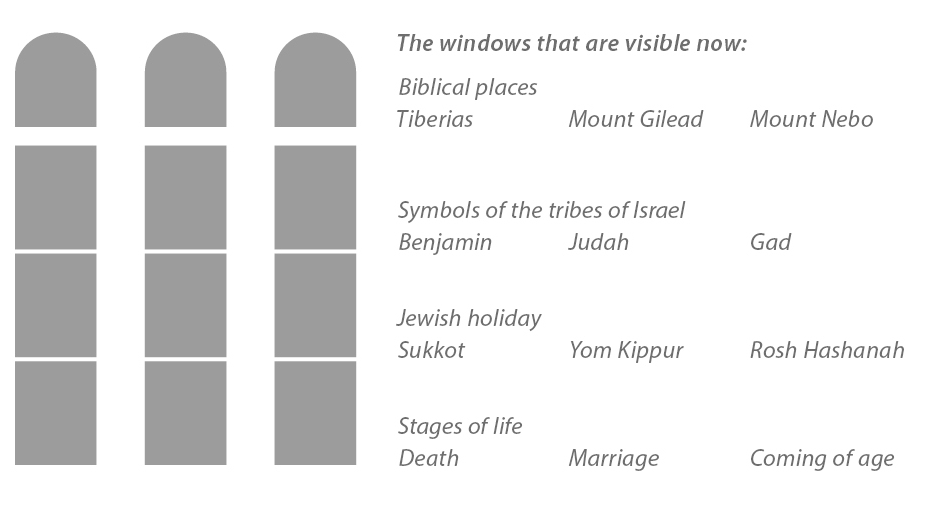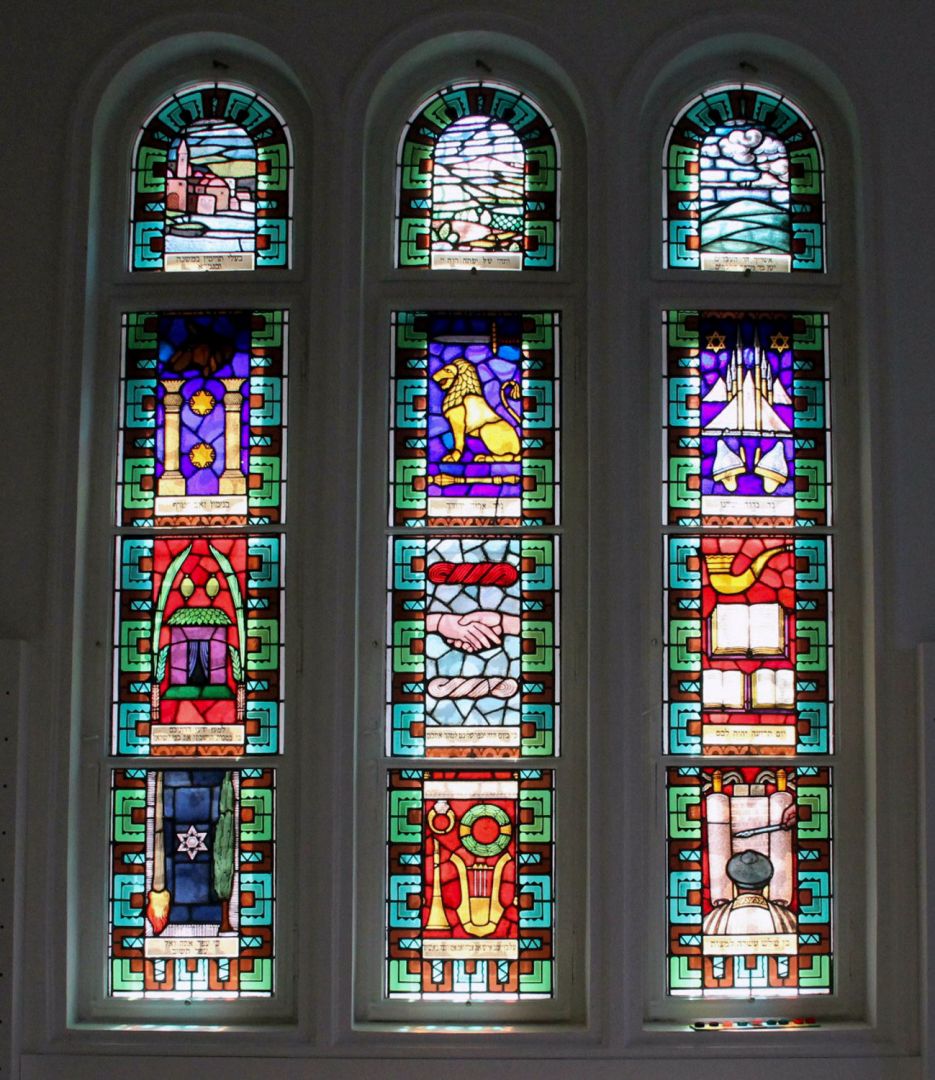3. Hall
Windows
Synagogue
If we looked out of the window, we would see the main entrance of the Dohány Street Synagogue. After the destruction of the Temple, synagogues became the religious center of Jewish life. The synagogue liturgies kept many customs and rituals from the ceremonies of the Temple. However, those that are strictly connected to the practice of sacrificial worship in the Temple are not held in synagogues. The synagogue is the place of common prayer, learning and community life. The traditional terms of the synagogue refer to these functions: Beit Tfila is the house of prayer, Beit Midrash is the house of learning and Beit Knesset is the house of congregation. Today's term of ‘synagogue’ is derived from Hellenistic Greek translation of the latter title. The Torah is read three times in the synagogue on an average week: Monday, Thursday and Saturday. Some decisive parts of the prayers can only be said in the presence of the community, that is, at least ten Jews.
Windows
Originally, the colorful windows of the exhibition hall did not belong to the building of the Museum. The row of ornate windows, originally composed of 100 pieces, which depict biblical scenes, religious symbols and biblical plants used to decorate the synagogue and staircase of the Jewish High School, opened in 1931. The school building suffered severe damage during the siege of Budapest. In 1950, the school was socialized, the synagogue was abolished and the few remaining windows symbolizing undesirable content in the socialist era were removed. The former Director of the High School, Fülöp Grünvald, who was head of the museum from 1950 until 1963, saved the remaining 12 windows. It was then when they were placed in their current location.

